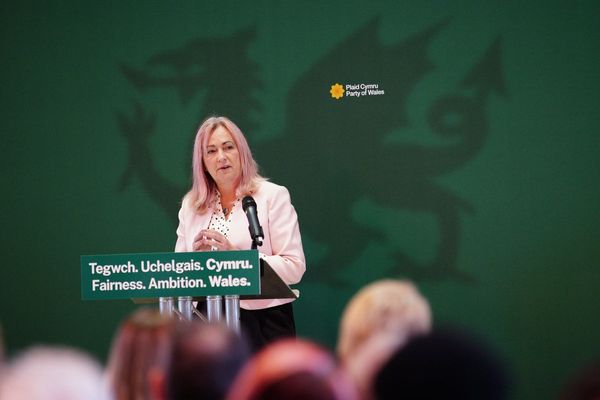The globe is getting warmer, and extreme heat kills thousands of people — perhaps tens of thousands — every year. Climate activists are pressuring officials to start naming heat waves, the way we do hurricanes, and several cities around the world are considering adopting the practice. If heat waves were named (so the activists argue) we’d be better able to bring the risks to public attention, thereby increasing the chances that people would take proper precautions.
I’m skeptical.
The most obvious challenge is that “heat wave” has no widely accepted meaning. Even though the usage can be traced at least to the 1860s (the Oxford English Dictionary wrongly says the 1870s), today’s definitions remain vague. Representative is Webster’s Unabridged, which gives “a period of abnormally hot and usually humid weather.” But how long? How hot?
Over the past half-century, heat waves in the U.S. have lengthened from an average of three days to an average of four days, according to EPA data, which defines a heat wave as lasting two consecutive days or more. But the World Meteorological Association insists on at least five consecutive days with a temperature of 5 degrees Celsius (9 degrees Fahrenheit) above the mean.
At the same time, because nighttime temperatures are better predictors of mortality than daytime temperatures, many experts argue that we should define heat waves according to minimum rather than maximum temperatures. That’s what the EPA does, referring to a daily minimum “apparent temperature” — a number that includes humidity — that is above the 85th percentile for July and August. The idea makes sense, but hasn’t overtaken other definitions.
Even if we could agree on what constitutes a heat wave, I doubt that people who hear “Heat Wave Stephen is on the way!” would pay closer attention than they would if they heard “A dangerous heat wave is on the way!” In the case of hurricanes, we know little about the practical effect of naming, and what little we do know is troubling.
An important 2014 paper published in Proceedings of the National Academy of Sciences found that hurricanes with “feminine” names result in greater damage than those with “masculine” names. The causal factor is what the authors call “gender-based expectations”: those in the storm’s path take fewer precautions because they expect feminine-named storms to be less severe. It’s hard to believe we’d respond differently to the names of heat waves.
Would we better recall the heat wave of 1936 — the worst in recorded U.S. history — had it been given a name? We all remember Hurricane Katrina, but that’s largely because of horrific television images and perhaps political associations as well. If naming hurricanes (formally, Atlantic tropical storms) were truly an aid to memory, lots of us would surely be able to cite the two most intense hurricanes ever to strike the U.S. mainland. How many of us can do that?
The answers are Hurricane Camille in 1969 and what has gone down in history as the Labor Day Hurricane of 1935. That 1935 storm was the most intense in U.S. history, but apart from storm afficionados, nobody talks about it nowadays. I don’t think the reason is that it didn’t have a name.
Perhaps most important, advocates of naming heat waves seem to misapprehend why hurricanes came to have official monikers.
Long before the U.S. government began naming tropical storms, people were perfectly aware of their existence and the horrific damage they could do. In the Caribbean, for example, as long ago as the 18th century hurricanes were named according to the nearest saint’s day — Hurricane Santa Ana, which struck in 1825, has long been considered one of the most intense storms ever to strike the region.
In the U.S., the formal naming of hurricanes began in the early 1950s, first with phonetic designations (Able, Baker, Charlie, and so on). In 1953, the government infamously switched to the system using female names (called at the time “girls’ names”). Though the gendering of tropical storms immediately provoked sharp criticism, only in 1977, under pressure from Commerce Secretary Juanita Kreps, was the current system of rotating male and female names adopted.
Yet none of this had anything to do with increasing public awareness of how destructive tropical cyclones can be. During the 1960s, the National Weather Service justified using names mainly for their role in facilitating communication among ships, airplanes and meteorological stations, which in the past had used mainly longitude and latitude to exchange information. Concern about the public was limited to reducing the “confusion and false rumors” that arose when journalists were unable to distinguish between two storms tracking along different paths at the same time.
A final point: During the 2021 hurricane season, Atlantic tropical storms were so frequent that the World Meteorological Association, which these days has formal charge of nomenclature, ran out of names. If you want to publicize the turmoil caused by climate change, that fact is a lot easier to remember than what names were on the list.
____
ABOUT THE WRITER
Stephen L. Carter is a Bloomberg Opinion columnist. A professor of law at Yale University, he is author, most recently, of “Invisible: The Story of the Black Woman Lawyer Who Took Down America’s Most Powerful Mobster.”
This column does not necessarily reflect the opinion of the editorial board or Bloomberg LP and its owners.







